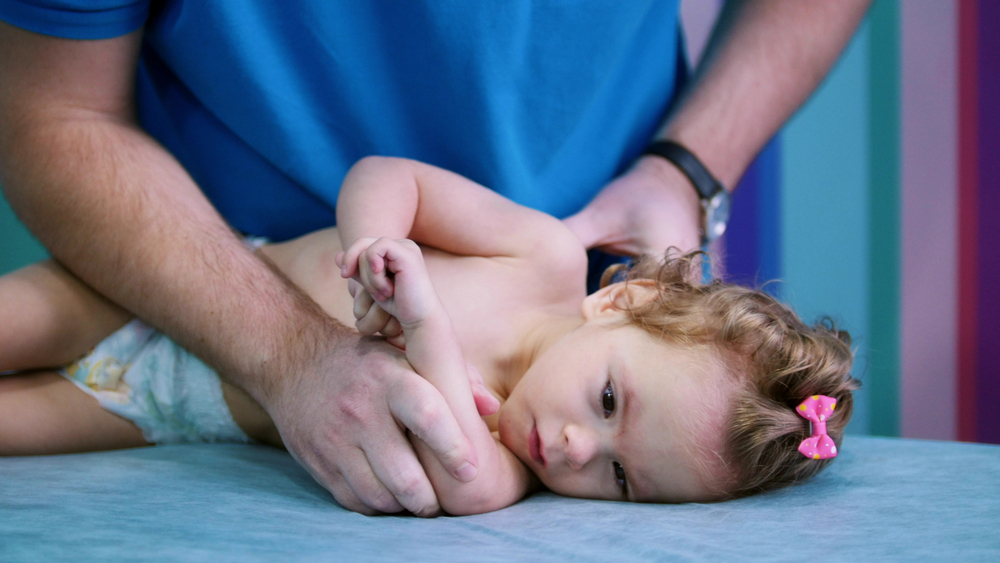Defining Birth Injuries and Their Causes
Birth injuries refer to physical harm or trauma that an infant may endure during the labor and delivery process. These injuries can range from minor, such as bruising or swelling, to severe, resulting in long-term disabilities or developmental issues. The causes of birth injuries are varied and can include factors such as prolonged labor, premature delivery, or medical negligence.
- Prolonged labor can lead to complications such as oxygen deprivation, which may cause brain damage or other serious conditions.
- Premature delivery often results in infants being more susceptible to injuries due to their underdeveloped bodies and organs.
- Medical negligence, such as improper use of delivery tools or failure to monitor the baby’s vital signs, can directly lead to birth injuries.
It is crucial for families to understand that birth injuries can lead to lifelong disabilities, including cerebral palsy. In some cases, when a birth injury is the result of medical negligence, parents can sue for medical malpractice to seek compensation for their child’s suffering and ongoing medical treatment.
Physical and Neurological Birth Injuries: A Closer Look
Birth injuries can manifest in various physical and neurological forms, each with its own set of challenges and treatment requirements. Physical injuries may include fractures, nerve damage, and soft tissue injuries, which are often visible and can be diagnosed shortly after birth. Neurological injuries, such as cerebral palsy or hypoxic-ischemic encephalopathy, may not be immediately apparent and can have far-reaching implications for a child’s development.
The following points provide a closer look at common physical and neurological birth injuries:
- Fractures: Typically involving the clavicle or arm, these injuries can result from a difficult delivery but often heal with proper care.
- Brachial Plexus Injuries: Damage to the nerves that control the arm and hand, which can lead to varying degrees of paralysis.
- Cerebral Palsy: A group of disorders affecting movement and muscle tone, often caused by damage to the developing brain either during pregnancy or childbirth.
- Perinatal Asphyxia: A condition where the baby’s brain does not receive enough oxygen before, during, or after birth, potentially leading to neurological deficits.
Early detection and intervention are crucial for mitigating the impact of these injuries. Rehabilitation therapies, such as physical therapy, occupational therapy, and speech therapy, play a significant role in a child’s recovery and development. It is essential for families to work closely with a multidisciplinary team of healthcare professionals to create a tailored plan that addresses the unique needs of their child.
The Long-Term Effects on Child Development
Birth injuries can have a profound impact on a child’s developmental trajectory. The extent and nature of these effects often depend on the severity and type of injury sustained during birth. Children may face challenges that span across various domains of development, including physical, cognitive, emotional, and social growth.
- Physical Development: Delays in reaching developmental milestones such as sitting, crawling, or walking are common. Some children may require ongoing physical therapy to improve motor skills and manage physical disabilities.
- Cognitive Development: Cognitive impairments can range from mild learning disabilities to more severe intellectual disabilities. Early intervention programs are critical in supporting cognitive development and maximizing the child’s potential.
- Emotional and Social Development: Birth injuries can also affect a child’s ability to form relationships and regulate emotions. Behavioral therapies and social skills training can be beneficial in addressing these challenges.
- Communication: Language and communication skills may be delayed or impaired, necessitating speech and language therapy. Augmentative and alternative communication (AAC) devices might also be employed to facilitate communication.
The long-term effects on child development require a multidisciplinary approach to care, involving healthcare professionals, educators, and therapists. Families play a crucial role in supporting their child’s development, often advocating for services and resources to meet their child’s unique needs.
Navigating the Healthcare System
Accessing Specialized Medical Care
For families of children with birth injuries, finding and accessing specialized medical care is a critical step in ensuring the best possible outcomes. This often involves a multidisciplinary approach that may include pediatricians, neurologists, physical therapists, and other healthcare professionals who specialize in treating birth injuries.
- Identify appropriate specialists: Research and referrals are key in identifying healthcare professionals with the necessary expertise.
- Utilize online resources: Websites like Boston Children’s offer comprehensive services for patients and healthcare professionals, including patient resources and information on clinical trials.
- Coordinate care: Establishing a central point of contact can help in coordinating the various aspects of a child’s care and ensuring that all healthcare providers are working together effectively.
Navigating the complex landscape of specialized medical care requires persistence and advocacy. Parents and caregivers must often become well-versed in their child’s condition to make informed decisions and to advocate for their child’s needs within the healthcare system.
Insurance Challenges and Advocacy
For families grappling with the aftermath of a birth injury, navigating the complexities of the healthcare insurance system can be as daunting as the diagnosis itself. The journey often involves understanding intricate policy details, fighting for necessary coverage, and advocating for the rights of the child.
- Understanding Policy Details: It is crucial for families to thoroughly understand their insurance policy’s coverage, including exclusions and limitations, to effectively plan for their child’s care.
- Fighting for Coverage: Parents may find themselves in a position where they need to contest insurance denials or limitations. This can involve gathering extensive medical documentation and preparing appeals.
- Advocacy: Advocacy plays a pivotal role in securing the services and support a child with a birth injury needs. This may include reaching out to legal experts who specialize in birth injury cases, such as ABC Law Centers, to navigate the legal aspects of insurance disputes.
The emotional and financial toll of these challenges can be significant, but resources are available. Early special education interventions and social support networks can provide much-needed assistance. In cases where the birth injury may have been preventable, seeking legal help is a critical step towards justice and compensation.
Coordinating Between Multiple Healthcare Providers
For families dealing with birth injuries, coordinating care between various healthcare providers is a critical task that requires meticulous organization and communication. It often involves managing appointments, sharing medical information, and ensuring that all providers are on the same page regarding the child’s treatment plan.
- Establish a Primary Point of Contact: It is beneficial to designate a primary healthcare provider who can oversee the child’s overall care and serve as a central point of communication.
- Maintain Comprehensive Records: Keeping detailed records of all medical appointments, treatments, and recommendations is essential. This includes a list of medications, dosages, and any side effects observed.
- Utilize Technology: Leveraging technology, such as electronic health records (EHRs) and patient portals, can facilitate the sharing of information and coordination of care among different providers.
Effective coordination can help prevent medical errors, reduce redundant testing, and ensure that the child receives consistent and comprehensive care. It also alleviates some of the stress on families by creating a more streamlined healthcare experience.
Legal Support and Rights Awareness
Understanding Medical Malpractice and Legal Recourse
When a child suffers a birth injury, it may be due to medical malpractice, which occurs when a healthcare professional deviates from the standard of care during delivery. Families affected by such negligence have the right to seek legal recourse. This process begins with understanding the legal definition of malpractice and recognizing the signs that may indicate a breach in the duty of care.
Birth injury lawsuits are a legal avenue for families to address the harm caused by medical errors. These lawsuits can be complex and typically involve several key steps:
- Identifying and documenting the injury and its impact on the child’s life.
- Consulting with legal experts to evaluate the merits of the case.
- Filing a lawsuit within the statute of limitations.
- Gathering evidence, including medical records and expert testimony.
- Negotiating settlements or proceeding to trial if necessary.
Legal help is crucial for navigating the intricacies of medical malpractice claims and for ensuring that families receive the compensation they deserve. Compensation can cover medical expenses, ongoing care costs, and other damages related to the injury. It’s important for families to work with attorneys who specialize in birth injury cases to maximize their chances of a successful outcome.
Navigating the Legal System: A Guide for Families
For families grappling with the aftermath of a birth injury, understanding and navigating the legal system can be a daunting task. It is essential to recognize the steps involved in seeking justice and compensation, which can provide the necessary resources for the child’s ongoing care and support.
- Gather Documentation: Collect all medical records and evidence related to the birth injury. This includes hospital records, doctor’s notes, and any other relevant information.
- Consult a Lawyer: Seek out an attorney who specializes in medical malpractice or birth injury cases. They can offer guidance on the viability of your case and the legal proceedings ahead.
- Understand the Process: Familiarize yourself with the legal process, including filing a lawsuit, discovery, and potential trial. Your lawyer will navigate these steps with you.
- Consider Settlement Options: Be open to settlement discussions, which may provide a quicker resolution. However, ensure that any settlement adequately covers your child’s needs.
Throughout this journey, it is crucial to maintain open communication with your legal team and to stay informed about the progress of your case. The right legal support can make a significant difference in securing a future that accommodates the needs of a child affected by a birth injury.
Protecting Your Child’s Rights and Future
Ensuring that a child with birth injuries has a secure future is a paramount concern for families. It involves being proactive in understanding the child’s legal rights and the various protections afforded to them under the law. This includes the right to accessible education, healthcare, and, when necessary, accommodations in public spaces and institutions.
Families can take several steps to safeguard their child’s rights:
- Educate themselves on the relevant laws and regulations, such as the Americans with Disabilities Act (ADA) and the Individuals with Disabilities Education Act (IDEA).
- Work with legal professionals who specialize in disability rights to navigate any legal challenges that may arise.
- Create a life care plan that outlines the child’s needs throughout their life, including medical, educational, and support services.
- Establish a special needs trust to manage resources for the child’s benefit without jeopardizing eligibility for government assistance programs.
By taking these measures, families can create a strong foundation that supports their child’s growth into a self-reliant individual with the full enjoyment of their rights and opportunities for a fulfilling life.
Emotional and Psychological Support for Families
Counseling and Therapy Options
The emotional and psychological well-being of families dealing with birth injuries is paramount. Counseling and therapy can offer a much-needed outlet for parents and siblings to process their feelings and learn coping strategies. Professional support can take various forms, including:
- Individual therapy to address personal emotional needs and concerns.
- Family counseling to help all members communicate effectively and support one another.
- Play therapy for children, which can be particularly beneficial in helping them express themselves and understand their sibling’s condition.
It’s important for families to recognize that seeking mental health support is a sign of strength, not weakness. Organizations like the March of Dimes are instrumental in providing guidance and resources to families embarking on this journey. They emphasize the importance of early intervention and continuous support to ensure that families have the tools they need to thrive.
Support Groups: Sharing Experiences and Coping Strategies
For families grappling with the aftermath of a birth injury, support groups offer a sanctuary for sharing experiences and learning from others in similar situations. These groups provide a platform for parents and caregivers to discuss their challenges, exchange practical advice, and find solace in the understanding that they are not alone.
- Peer Support: Engaging with peers can help in normalizing the emotional rollercoaster that comes with raising a child with a birth injury. Members often find comfort in the shared narratives and the collective wisdom within the group.
- Coping Strategies: Support groups can be a treasure trove of coping mechanisms, from managing day-to-day care to navigating complex medical appointments. The strategies shared are often tried and tested, offering real-world solutions that can be adapted to individual needs.
- Empowerment through Knowledge: As families share resources and information, they empower each other to make informed decisions about their child’s care and advocate effectively for their needs.
The benefits of participating in a support group extend beyond the immediate exchange of advice. They foster a sense of community and belonging, which can be incredibly uplifting during times of stress and uncertainty. Moreover, these groups can sometimes serve as a springboard for collective action, whether it’s advocating for policy changes or raising awareness about birth injuries.
Caring for the Caregiver: Managing Stress and Burnout
Caregivers of children with birth injuries often shoulder immense responsibilities that can lead to high levels of stress and burnout. It is crucial for caregivers to recognize the signs of burnout and take proactive steps to maintain their own well-being. This not only benefits the caregiver but also ensures that they can continue to provide the best care for their child.
Key strategies for managing stress and preventing burnout include:
- Establishing a support network of friends, family, and professionals who can offer practical help and emotional support.
- Prioritizing self-care activities, such as regular exercise, healthy eating, and sufficient sleep, to maintain physical and mental health.
- Seeking respite care services to take necessary breaks, which can help recharge one’s energy and perspective.
- Practicing mindfulness and relaxation techniques to manage day-to-day stress and maintain a calm and focused mindset.
It is also important for caregivers to set realistic expectations for themselves and to recognize the value of their efforts. By acknowledging their own needs and limitations, caregivers can create a more sustainable balance between caring for their child and preserving their own health and happiness.
Educational and Social Integration
Special Education Services and Accommodations
Children with birth injuries may face unique challenges in the educational system. To address these, special education services and accommodations are designed to provide tailored support that aligns with each child’s specific needs. These services ensure that children with disabilities have equal access to education and the opportunity to learn alongside their peers.
- Individualized Education Programs (IEPs): Each child is assessed to create a personalized education plan that outlines the specific services and accommodations required.
- Assistive Technologies: Schools may provide devices and software to aid learning, such as speech-to-text programs or specialized computers.
- Accessibility Modifications: Physical changes to the school environment, like wheelchair ramps and adjustable desks, help remove barriers to education.
It is crucial for parents and caregivers to collaborate with educators and therapists to establish an effective educational plan. Regular reviews and adjustments to the IEP ensure that the child’s evolving needs are met, fostering an inclusive and supportive learning environment.
Inclusive Practices in Schools and Communities
Inclusive practices within schools and communities are vital for the integration and development of children with birth injuries. These practices are designed to foster an environment where all children, regardless of their abilities, are welcomed, valued, and given equal opportunities to participate in educational and social activities.
- Universal Design for Learning (UDL): Schools implementing UDL principles ensure that curricula are accessible and engaging for all students. This approach involves providing multiple means of representation, expression, and engagement to cater to diverse learning needs.
- Peer Support Programs: These programs encourage friendships and understanding between students with and without disabilities, promoting social inclusion and empathy.
- Community Accessibility: Beyond the school gates, inclusive communities focus on removing physical barriers in public spaces and providing accessible recreational activities, so children with birth injuries can enjoy community life to the fullest.
The success of these practices hinges on continuous collaboration between educators, parents, and community leaders. Training and awareness programs are also essential to equip all stakeholders with the knowledge and skills to support inclusive environments effectively.
Preparing for Adulthood: Life Skills and Independence
As children with birth injuries transition into adulthood, the focus shifts to equipping them with the necessary life skills and fostering independence. This critical stage involves a multi-faceted approach that includes practical training, social skill development, and planning for future employment or continued education.
- Practical Training: Adolescents may receive instruction in managing personal finances, performing household tasks, and understanding health care needs. These skills are essential for independent living and can be taught through specialized programs or individualized support.
- Social Skill Development: Interpersonal communication and relationship-building are key areas of focus. Programs that offer social skills training can help young adults navigate complex social environments and build meaningful connections with peers.
- Future Planning: Career counseling and job training programs are instrumental in preparing for the workforce. For those pursuing higher education, assistance with college applications and accommodations is crucial. Transition plans should be personalized, taking into account each individual’s strengths, interests, and support needs.
Families and caregivers play a pivotal role in this transition by advocating for appropriate resources and ensuring that their young adults have the opportunities to thrive in society. Collaboration with educators, therapists, and vocational experts is often necessary to create a comprehensive plan that paves the way for a fulfilling and autonomous adult life.





